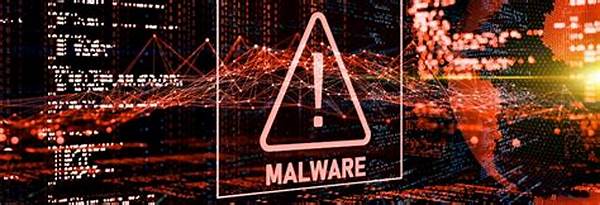Hey there, tech-savvy folks! Ever thought about what keeps our digital world safe from sneaky hackers and their pesky malware? It’s all down to some nifty proactive malware detection methods. Gone are the days when we’d sit around waiting for threats to strike before reacting. Nowadays, we’re all about catching those little buggers before they even have a chance to cause chaos. So, let’s dive into the fascinating world of proactive malware detection and see what’s making our cyberspace a safer place.
Why Proactive Malware Detection is a Game-Changer
The digital world, just like the real one, is constantly changing. Malware creators are getting smarter, finding new ways to sneak into our systems. That’s where proactive malware detection methods come into play. Unlike traditional methods that react to threats that have already breached systems, proactive techniques aim to identify and neutralize these threats before they have a chance to make their mark. Think of it like having a security guard who knows a thief will strike before they even make it to the door. This not only slams the door shut on malware but also boosts system reliability, keeping your data safe and sound. In essence, proactive malware detection methods are the unsung heroes, tirelessly working behind the scenes to maintain the health and security of our digital ecosystems. It’s high time we give them the credit they deserve!
The Components of Proactive Malware Detection
1. Behavior Analysis: By monitoring how a program behaves, proactive malware detection methods can discern if something fishy is going on. It’s like having a keen detective sensing something’s off.
2. Heuristic Analysis: This tough cookie doesn’t just depend on past threats. Instead, it analyzes potential threats that haven’t been fully defined.
3. Machine Learning: Proactive malware detection methods use algorithms to predict what’s coming, learning from past data to spot anomalies.
4. Sandboxing: Imagine a secure playground where programs can be launched. If they misbehave, proactive malware detection methods identify and isolate them effectively.
5. Signature-less Detection: We’re ditching the old reliance on malware signatures. Proactive methods emphasize behavior and anomaly detection.
How Proactive Malware Detection Keeps You Safe
So, how exactly do proactive malware detection methods keep your devices safe? Think of these methods as digital bodyguards. They’re always on standby, analyzing data, and making sure nothing suspicious sneaks through. Their main goal? To catch threats before they even knock on your door. By observing behavior patterns, they can spot anomalies that might indicate malicious activity. This preventative measure significantly lowers the risk of a breach, offering peace of mind to users everywhere. And it’s not just about protection; it’s about efficiency too. Your system’s performance remains unhindered, as proactive malware detection methods work seamlessly in the background. Essentially, they’re the unsung heroes of the digital world.
But wait, there’s more! These methods are constantly evolving. As hackers devise new tactics, proactive malware detection methods learn and adapt. It’s a continuous game of cat and mouse, but thankfully, with proactive measures, the odds are stacked in our favor. By embracing these advanced detection techniques, businesses and individuals can maintain a strong defense against the ever-present threat of malware.
Breaking Down Proactive Malware Detection Methods
Understanding proactive malware detection isn’t rocket science. Let’s break it down with ten points that illustrate why they’re vital:
1. Early Detection: Spot threats before they manifest.
2. Variable Approach: Adaptable to different threats.
3. Continuous Monitoring: Always vigilant.
4. Predictive Analysis: Predicts and prevents future threats.
5. Data Safety: Keeps sensitive info under wraps.
6. Minimal Interruptions: Operates without system slowdowns.
7. Cost Efficiency: Reduces the long-term financial impact of breaches.
8. User-Friendly Interfaces: Simple for all users.
9. Advanced Learning: Continuously evolves with new data.
10. Increased Reliability: Boosts trust in digital systems.
The Future of Proactive Malware Detection
Looking ahead, the evolution of proactive malware detection methods promises to further revolutionize our cyber defenses. As artificial intelligence (AI) and machine learning continue to grow, they’re set to play an even bigger role in shaping these methods. Imagine a digital world where your data is safeguarded by AI that learns and evolves, constantly staying a step ahead of potential threats. Sounds futuristic, right? But it’s closer than you think! As technology advances, proactive malware detection methods become more sophisticated, capable of recognizing even the subtlest signs of an impending attack. By integrating AI, systems will not only predict but also preemptively neutralize threats, ensuring that users remain secure.
One of the most exciting developments is the potential for personalized security measures. Picture a tailor-made detection system that understands your usage patterns and adjusts its defenses accordingly. This bespoke level of protection is only made possible through the hard work of those developing proactive malware detection methods. As we move into this exciting future, we can trust these methods to keep our digital realms safe and sound. Stay tuned, because the best is yet to come in proactive malware detection!
In Conclusion: The Importance of Staying Proactive
Alright, we’ve taken a pretty deep dive into the world of proactive malware detection methods. It’s clear that these advanced measures are not just an option but a necessity in today’s digital age. As cyber threats continue to evolve, the way we safeguard our systems must keep up. Proactive detection isn’t just about having technology in place. It’s about fostering a mindset where we’re constantly on guard, thinking ahead, and staying one step ahead of potential threats.
In the grand scheme of cybersecurity, these detection methods play a pivotal role, acting as our first line of defense. By embracing them, we’re not only protecting our systems and data but also ensuring a smoother, more efficient digital experience. Remember, in the age of technology, being proactive isn’t just a strategy – it’s a survival tactic. So, gear up and stay safe!

